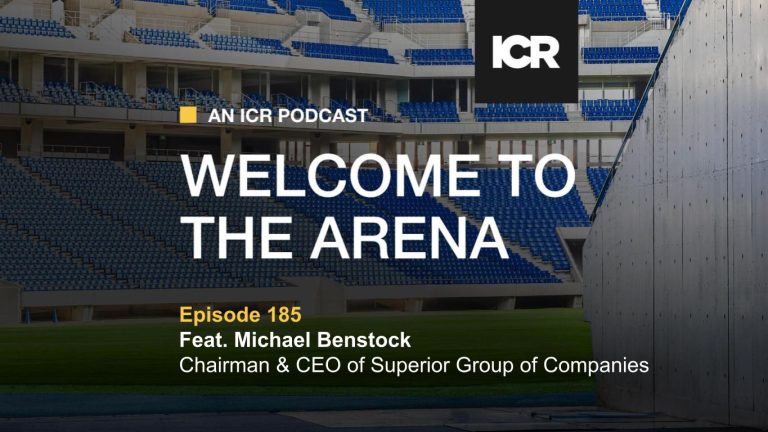Research analysts specialize in translating consumer behavior trends and the competitive landscape into stock recommendations. With a deep understanding of how investors view and think about public companies, they are equipped to provide a knowledgeable perspective about how the markets are shifting, what investors are thinking, and how companies are rising above their competition.
In a recent episode of the ICR podcast, Welcome to the Arena, ICR Co-Founder and CEO Tom Ryan spoke with Nicole Miller Regan, senior research analyst at Piper Sandler, about everything from the restaurant industry’s response to the COVID-19 pandemic to how companies can more effectively work with research analysts.
Restaurant Industry Response to COVID
The restaurant and hospitality industries were hit hard by the COVID-19 pandemic, but according to Regan, there are strong signs of recovery. For example, while some channel shifts may be permanent (e.g., consumer preference for delivery and drive-through service), restaurants are currently seeing a pivot back to dining room service.
“Consumers are spending 50 cents of every food dollar away from the home,” Regan reports, adding that when comparing 2021 to 2019, sales are up across the board. “We’re headed back in that direction faster than we ever would have thought.”
Some of the companies that most successfully navigated the pandemic focused on deploying innovative technology to keep consumers coming back. “Cisco really stood up and stood out. They made structural changes in terms of technology,” says Regan, explaining that the company developed a new pricing tool that provides transparency in regard to every item for every restaurant they work with. “Through that process, there’s the ability for them to leverage pricing in their favor, but do it with transparency.”
However, in the restaurant industry, it still comes down to the food. “To think a restaurant company is a technology company is a huge mistake,” says Regan. While some of the best emerging restaurant concepts are leveraging technology, their recovery relies more on culinary innovation and exceptional service. “They’re just absolutely crushing it with their people and their food. And that’s what this industry is really all about.”
The Future of the Restaurant Industry
That innovation comes at a good time. Regan explains that the last expansion cycle for restaurants was 2010 to 2015. Over the next several years, the industry experienced a contraction cycle characterized by M&As, leaving around 40 publicly traded restaurant stocks. “The industry has an appetite for new investments,” she says.
And that extends beyond limited service or fast casual concepts. “It’s important to understand that emerging concepts are not all fast casual,” she explains. “There are amazing full service brands out there.”
Investors are also interested in non-chain concepts. “We need independence for culinary innovation and the whole notion of hospitality,” says Regan. “It will take a bit longer, but we ultimately expect an independent revival.”
How Companies Can Help Analysts Do Their Jobs
Research analysts can provide insight into what investors are thinking, what competitors are doing, and how the market is shifting, but it’s a two-way street. Analysts must have a clear understanding of a company’s long-term strategy and the operational and financial specifics of how they plan to get there. Companies can make that easier by building relationships and communicating effectively with analysts.
For example, “If we ask a question and there isn’t a compelling, straightforward answer, ‘no’ is never the answer,” says Regan. Instead, she recommends saying “yes” to every question, and then parlaying the answer into the targeted message your company wants to convey. “That creates a framework for us to have a discussion.”
As far as guidance, it’s no mystery that many companies got slammed by COVID and had to shut down or modify operations. “We’re not asking anyone to be grounded in guidance; I don’t see how that is possible,” Regan says. Investors realize this isn’t a normal environment. You should, however, look at the present and provide whatever information is possible (e.g., expenses, even if you don’t yet have an accurate picture of revenue) to give analysts enough to talk to investors.
The Rise of ESG
As consumers and investors become more socially conscious, companies are increasingly incorporating environmental, social, and governance (ESG) into their investment narrative. Investors want to know about companies’ carbon footprints, labor practices, and commitment to diversity. Regan agrees that these considerations are beginning to factor into her analysis.
“We’re at the beginning stages of that,” she says. “If a company wants to get that next-generation investor, [ESG] is going to be a prerequisite.” While companies historically focused on the governance piece, they must now figure out how to tell a story with much more dimension.
While Regan offers in-depth knowledge about the restaurant and hospitality space, her insights on market shifts and investor priorities apply to companies in nearly every industry. To hear more of her perspectives, listen to the full episode of Welcome to the Arena.



